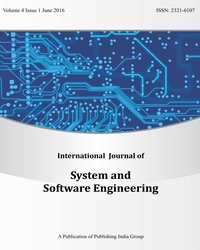Study on the Efficacy of Electroencephalography Biofeedback with Mindful Meditation on Mental Health of Youths
Subscribe/Renew Journal
Background: Electroencephalography (EEG) is an electrophysiological monitoring method to record electrical activity of the brain. It is typically noninvasive, with the electrodes placed along the scalp. Electromyography (EMG) is an electro diagnostic medicine technique for evaluating and recording the electrical activity produced by skeletal muscles. EMG is performed using an instrument called an electromyography to produce a record called an electromyogram.
Objective: The present study aimed at studying the Efficacy of Electromyography and Electroencephalography Biofeed-back with Mindful Meditation on Mental Health of Youths.
Participants, Settings: Firstly the researcher has selected the two schools, one in urban area i.e. Lalquan and other in the rural area i.e. Pilkhua in Ghaziabad. The participants were assessed before and after the session. The intervention was held in four sessions, which was being conducted twice in a week. There are two groups-Group A (Experimental group) and Group B (Control group). This intervention was held to compare between Group A and Group B as well as with the aim of showing the effect of positive thinking on Group A (Experimental group). All the participants took part in the study voluntarily. Along with their interest these session were being successful in completing this whole study with intervention. The study had the approval of department of psychology of DSVV-Haridwar.
Measures: The scale used to measure the stress level and level of creative problem solving of the students was-“Stress Scale and creative problem solving” Stress Scale-This is a self-reporting scale of measuring stress. The scale consists of 40 items and 3 response categories as-“always”, “sometimes” and “never”. This scale was used to measure the stress level of the subject before and after the intervention of both the group.
Result: This study concluded that the Effect of EEG Machine helps in stress management and increase the level of Creative Problem solving among students. Because we also know that the students who experience EEG BioFeedback also perform good in their work and other students who did not, have no difference before their work.
Objective: The present study aimed at studying the Efficacy of Electromyography and Electroencephalography Biofeed-back with Mindful Meditation on Mental Health of Youths.
Participants, Settings: Firstly the researcher has selected the two schools, one in urban area i.e. Lalquan and other in the rural area i.e. Pilkhua in Ghaziabad. The participants were assessed before and after the session. The intervention was held in four sessions, which was being conducted twice in a week. There are two groups-Group A (Experimental group) and Group B (Control group). This intervention was held to compare between Group A and Group B as well as with the aim of showing the effect of positive thinking on Group A (Experimental group). All the participants took part in the study voluntarily. Along with their interest these session were being successful in completing this whole study with intervention. The study had the approval of department of psychology of DSVV-Haridwar.
Measures: The scale used to measure the stress level and level of creative problem solving of the students was-“Stress Scale and creative problem solving” Stress Scale-This is a self-reporting scale of measuring stress. The scale consists of 40 items and 3 response categories as-“always”, “sometimes” and “never”. This scale was used to measure the stress level of the subject before and after the intervention of both the group.
Result: This study concluded that the Effect of EEG Machine helps in stress management and increase the level of Creative Problem solving among students. Because we also know that the students who experience EEG BioFeedback also perform good in their work and other students who did not, have no difference before their work.
Keywords
EEG, Meditation, Mental Health, Spirituality, Stress.
Subscription
Login to verify subscription
User
Font Size
Information



